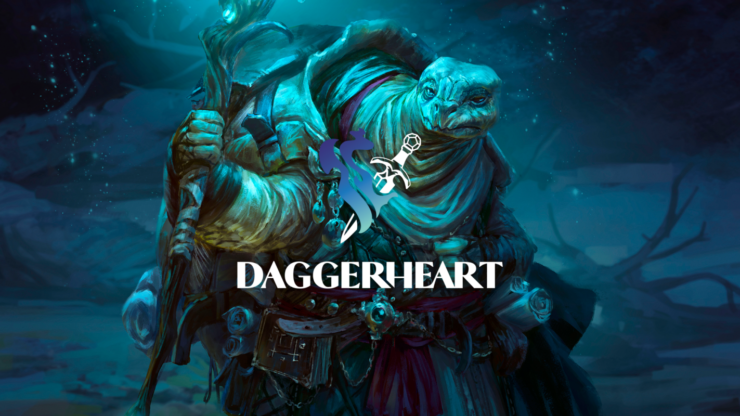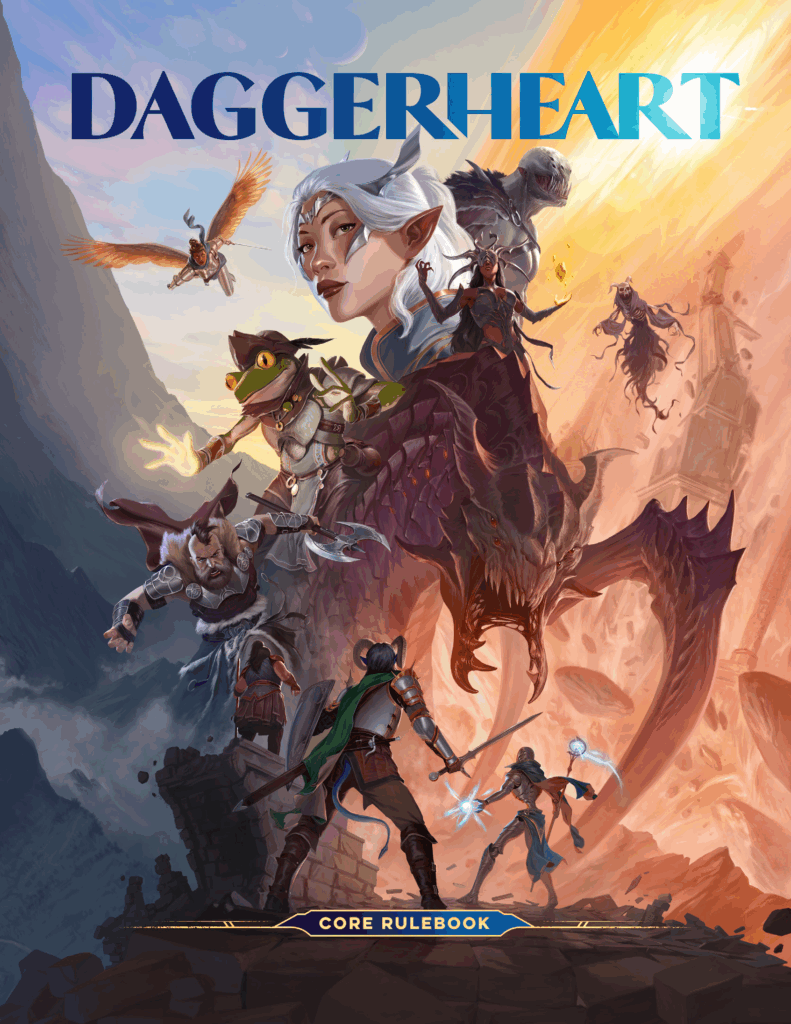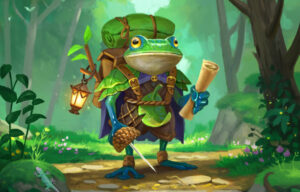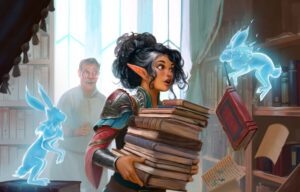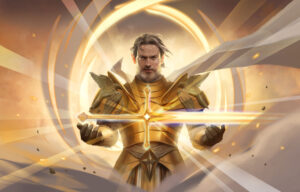Even though I think I never watched a full Critical Role session, I’d consider myself a fan. I totally adore their animated series and I own several books related to CR including a book about the group, several comics and two books about the setting of Exandria. When they announced their own fantasy RPG – Daggerheart – I was immediately excited. I didn’t actively participate in the playtest but I followed the game’s development and I liked a lot about it. Eventually I preordered the deluxe boxed set.
Unfortunately I am among the unlucky few who didn’t get their boxed sets on release day. For some reason some of them got delayed. Darrington Press didn’t get into detail about what caused the delay but they apologized and offered anyone affected by the delay access to Daggerheart on Demiplane and an Art & Token pack on Roll20 for free. The PDF was included in the preorder so I was able to check it out as soon as I got home on Tuesday. Please note that this will not be a proper review since I haven’t even read everything but rather my very first impressions on the PDF version of the game.
My first impression is extremely positive. The 415-paged PDF (including the core rules, various sheets, maps, and all Domain cards) is absolutely beautiful. Darrington Press has production values on par with much more prominent RPG publishers like Wizards of the Coast or Paizo. The included art is stunning and everything is well layed-out. But what about the content?
Daggerheart contains all the rules for players and GMs to play and run the game. There’s an extensive bestiary, equipment for all tiers of play, random loot tables, nine classes with two subclasses each, and 18 (yes, eighteen. That’s not a typo!) ancestries with rules on how to mix ancestries. There are 9 communities to pick from. I haven’t counted the Domain cards, but there’s plenty of those. Domain cards contain the various Abilities or Spells a character can pick up. The format reminds me somewhat of D&D 4th Editions powers which isn’t really a bad thing in my book.
The core mechanic is quite interesting. You roll with two d12 against a set difficulty. One of the dice is the Hope die, the other is the Fear die. When your Hope die has the highest result (this is called Roll with Hope) you get a Hope point which is a kind of meta currency which players can use in various ways including fuelling some of their abilities. If the Fear die is higher (which is called Roll with Fear) the GM gets a Fear point which he can use to trigger certain GM moves (like in PtbA games) or activate enemy abilities. If both results are the same the roll is considered a critical success and is also counted as a Roll with Hope. Rolls with Hope may lead to positive side-effect even if they fail while Rolls with Fear usually mean some kind of negative consequences for the player characters. I like that.
Daggerheart doesn’t come with a particular setting to play in, but with multiple campaign frames which can be used by players and the GM to collaboratively build a campaign. The included campaign frames are The Witherwild, Five Banners Burning, Beast Feast, The Age of Umbra (which will be an 8-part series by CR in the near future), Motherboard, and Colossus of the Drylands. Each campaign frame give enough information to get started and some even come with additional mechanics. Even if you don’t want to play in any of these it should be easy enough for any GM (even inexperienced ones) to create a campaign frame of their own. Daggerheart looks to be pretty flexible and can be easily adapted.
What I particularly like is that they included a lot of tips for new players or people new to the system. There are character guide sheets for each Class which give players assistance when creating their first characters. From what I’ve seen so far there’s a lot of GM advice on how to run Daggerheart with a focus on new GMs. It’s obvious – at least to me – that they want Daggerheart a great if not perfect entry for people new to the tabletop RPG hobby.
What I am most excited about is the freeform combat in Daggerheart. There’s no initiative, no action count or turns like in classic TTRPGs. Combat plays out much like noncombat scenes. This might be also the hardest thing for me to adapt to if I run or play Daggerheart. Turn-based combat has been a core concept of most TTRPGs for the last 50 years or so. At the moment I am not 100% sure how Daggerheart’s combat plays out at the table, but I’m sure they’ll give a proper explanation or example somewhere in the book. Remember: I haven’t finished reading the PDF, this is not a proper review.
I can’t help myself, but Daggerheart is a game that immediately grabbed me when I started learning more about it. There’s a lot of potential there and if I hadn’t already planned to run D&D 4th Edition, I’d probably switch to it in a heartbeat. Is Daggerheart the D&D killer? I doubt it. My guess is that it will get a healthy amount of players and GMs pretty quickly as word starts to spread. I’m interested in what might happen if Critical Role switches to Daggerheart for their main campaign, but I think they’ll probably stick to D&D 5th Edition for their main campaign – at least for the time being.
I’ll definitely dive deeper into Daggerheart‘s mysteries over the coming weeks and months and if I find the time, I’ll post about it here. Stay tuned.
UPDATE: I added a short section about the core mechanic.

